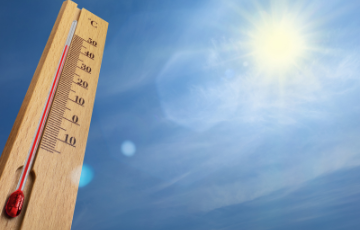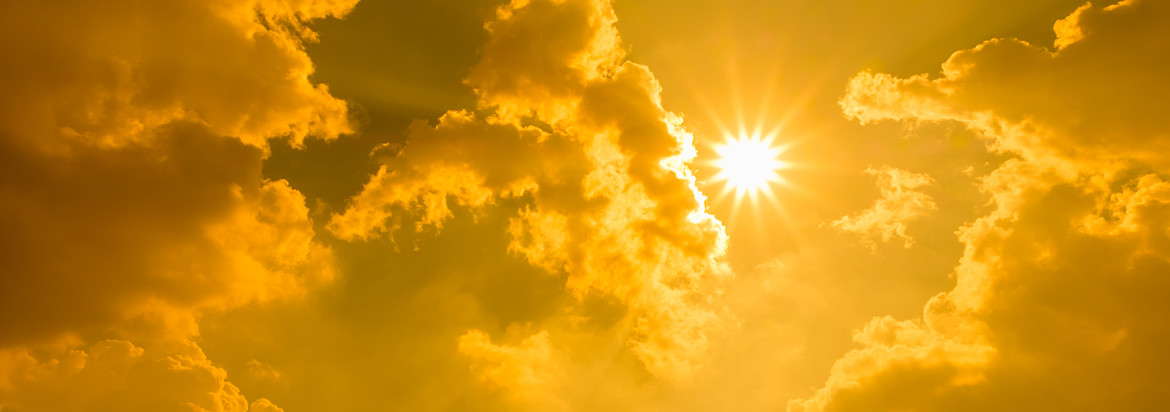When temperatures rise during the summer, it’s important to know the risks associated with excessive heat and prepare in advance to stay safe and healthy.
Be aware of the symptoms of heat-related illness, check on those at greater risk during extreme and prolonged periods of heat, and follow the tips below to avoid heat exhaustion or heat stroke.
Symptoms of heat-related illness
Symptoms of heat-related illness can be mild to severe. Mild to moderate symptoms include:
- Heavy sweating
- Severe headache
- Muscle cramps
- Extreme thirst
- Dark urine
If symptoms develop, seek a cooler environment, drink plenty of water and use water to cool your body. Wear a wet shirt or apply damp towels to cool your skin.
If you experience mild to moderate symptoms of heat-related illness and are eligible for Community Health Services, then Island Health’s Community Virtual Care (CVC) program may be able to support you. Visit the CVC webpage to learn more about the program and eligibility criteria.
When to call 9-1-1
More severe heat-related symptoms require urgent medical attention.
These include:
- High body temperature (>39 °C or 102 °F)
- Hot, flushed or very pale skin
- Light-headedness and/or fainting
- Confusion, disorientation, problems with speaking or coordination
- Seizures
- Unconsciousness
- Not sweating
- No or very little urination
- Rapid breathing and faint rapid heart rate
If you or someone else experiences these symptoms, call 9-1-1, move to a cool place, and cool the person with water and fanning.
People at greater risk
Some people are at greater risk of heat-related illness. Those most susceptible include:
- People aged 60 or older
- People who live alone
- People with pre-existing health conditions such as diabetes, heart disease or respiratory disease
- People with mental health conditions such as schizophrenia, depression or anxiety
- People with substance use disorders
- People with limited mobility
- People who are marginally housed
- People who work in hot environments
- Pregnant people
- Infants and young children
Other tips to avoid heat exhaustion or heat stroke
- Stay hydrated
-
- Drink more fluids regardless of your activity level
- Don’t wait until you’re thirsty to drink
- Avoid liquids that contain alcohol, caffeine or large amounts of sugar, as these are less helpful in keeping your body hydrated.
- If you stay inside
-
An indoor thermometer is a critical tool to stay safe indoors during the heat. Use a thermometer to assess your risk according to these guidelines:
- Sustained exposure to temperatures of 26°C or less is generally safe.
- Sustained exposure to temperatures from 26°C to 31°C may pose a risk to the most susceptible people.
- Sustained exposure to temperatures over 31°C should be avoided for susceptible populations whenever possible. If they cannot be avoided, you may need to leave your home for a cooler location, including a friend’s house, a hotel, a public space (such as a library) or a nearby cooling centre. For the most up-to-date information on cooling and misting centres during heat events, please visit your local municipal/regional district website or EmergencyMapBC.
- Keep your home cool
-
Indoor temperatures typically peak around 8 p.m. Your home can get dangerously hot if temperatures increase over multiple days and/or they do not cool down during the nights.
- Use your indoor thermometer to compare indoor/outdoor temperatures. If it’s hotter outside, close windows and doors and do not open them until it cools down. If you have children in your home, make sure you’ve taken precautions to prevent falls from windows and balconies.
- Close blinds and shutters during the day to keep the heat out. If it’s safe to do so, shading windows from the outside is most effective.
- Sleep in the coolest room of the house, even if that is not your bedroom. If possible, sleeping in the basement or outside will provide overnight relief.
- Fans are not enough to lower your core body temperature when it’s very hot. However, you can still use fans strategically to help move cooler air into the home overnight.
- If you have air conditioning (AC), use it. Be aware that portable AC units are usually only able to cool a single room. Cooling your bedroom will keep you safe while you sleep.
- Discover other steps you can take to bolster your home’s heat, flood and wildfire protection, courtesy of the Intact Centre on Climate Adaptation.
- If you go outside
-
- Try to stay in an air-conditioned location – such as a shopping mall or library – until outdoor temperatures have dropped.
- Seek cooler, breezier areas when outdoors, such as large parks near water with lots of trees.
- Avoid strenuous outdoor activities (exercise- and work-related) during the hottest time of day.
- Consider your neighbours – be respectful of pets and humans who need to rest/rehydrate temporarily in the shade at new locations.
- NEVER leave children or pets alone in a parked car. Temperatures can rise rapidly to dangerous levels in enclosed vehicles. Be sun-safe and remember to protect yourself from the heat!
- Check in with neighbours
-
People who are susceptible to heat can become ill quickly and may not be aware of the dangers until it is too late. Connecting with friends and family members can save lives.
- Help at-risk family, friends and neighbours to prepare for heat events in advance.
- Have a plan to check in/connect with a “hot weather buddy” during heat events. Check in more than once a day.
- If you are concerned for your buddy, review the symptoms above or use this tool to support them to take appropriate actions.
- Help at-risk friends and family members prepare for heat events by directing them to the resources on this page, or consider building them a Cool Kit.
- Dual smoke and extreme heat events
-
Overheating is a greater risk to health than smoke inhalation. Many people are at risk of potentially severe injury or death if they overheat, whereas a much smaller proportion are at risk of severe acute respiratory or cardiovascular attack due to smoke. Those individuals most at risk from smoke are also at risk from heat. Therefore, most people should prioritize staying as cool as possible in very hot weather.
When smoke and heat are co-occurring, seek cooler, cleaner indoor air – at home if possible, and elsewhere if not. At home, keep windows closed and use an air conditioner if available. If it’s not possible to keep your home cool without opening windows, consider visiting a location with cooler filtered air, such as a shopping mall or library.
For the most up-to-date information on cooling and misting centres, please visit your local municipal/regional district website or EmergencyInfoBC.
Resources for heat safety




